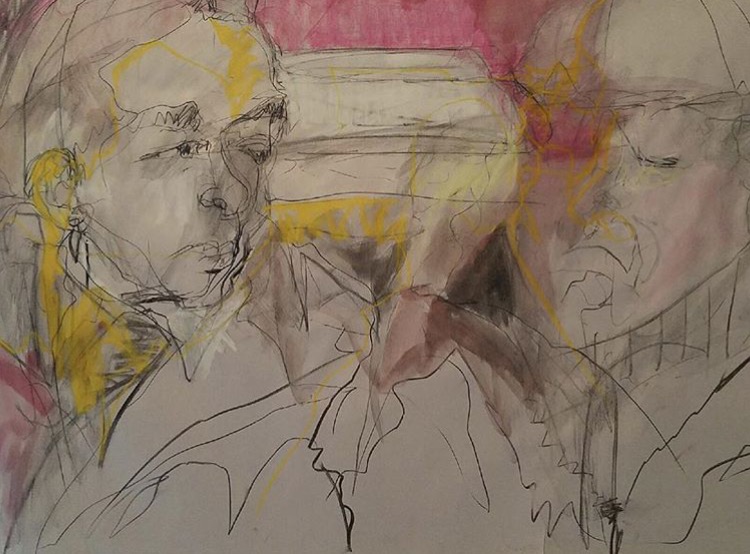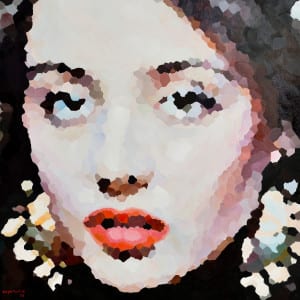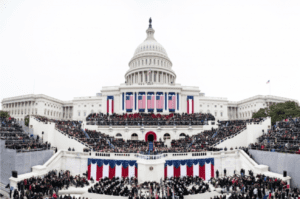Mary Montes spends half her time in the Hamptons and the other half in Florida—not a bad living situation if you ask us. The artist’s muses are esteemed members of the New York school (think Jackson Pollack, Jasper Johns and Andy Warhol), and we’re sure they’d approve of the way Montes paints them. Mary Montes’ work exudes energy, passion, and personality, and so does the artist herself. We had the great privilege of talking to this accomplished painter ahead of her show “De Kooning & Friends, ” which opened May 5 at the Sag Harbor Whaling and Historical Museum.
AZ: Tell us about your artistic background. Did you always know you wanted to be a painter?
MM: I grew up in a country setting in northern New Jersey surrounded by nature and void of distractions such as movie houses and bowling alleys. It was a very nurturing atmosphere to create poetry, songs, and paintings. My uncle was a painter and sculptor from the New York school era and exposed me to the history and culture of the art scene. I eventually received formal education in drawing and painting. My life was grooming all along to create, paint and immerse myself in my work.
AZ: Describe your painting process. What helps you get into the creative zone?
MM: So I listen to Blues, Jazz, or Drake; it’s the primary way I relax to start a painting. Lighting is usually low with a spotlight on the canvas. Distractions are cooking with a glass of wine and it either happens or doesn’t. I prefer solitude. The subject drives the work, which can change midstream—very intuitive.
AZ: Would you agree that artists’ surroundings have a profound effect on the work they make? How has your art changed with each different place you’ve lived?
MM: My studio is a major part of the process. I have used large shared spaces at university, with freedom to work on multiple pieces at once. I have more peace when I work at my home loft, but space is limited. I need space but have learned to sacrifice space for privacy. When I’m in the East End work is lively, in the desert, serene. I tune everything out and get into a frame of mind where only the music and model exist.
AZ: Your work is figurative, but there are certainly some abstract tendencies as well—is it difficult to find a balance between realistic representation and abstraction? How does the relationship between the two come into play in your paintings?
MM: No. I don’t worry about terms like “figuration” or “abstraction.” The painting has a mind of its own. The intensity, distortion, and medium are dictated by my level of passion for the subject. De Kooning, Rauschenberg, and Castelli as well as personal models or landscapes all move me, but not always. A sense of composition and life are what make the work work. The image I have in my head informs me how abstract to take it. I’m consistently moving towards obliterating recognizable forms, but rather attached to certain body parts. “It’s not a person, it’s a painting,” as Brian Curtis taught me.
AZ: Your subjects are icons of the mid- to late-20th century New York art scene. What is it about people like Willem de Kooning, Andy Warhol, Jackson Pollack and Robert Rauschenberg that compels you to paint them?
MM: Their stories are exciting to me. I am very intrigued by the history of art in America. My uncle, Tom Stadnick, a painter and sculptor, shared stories of Pollack, Krasner, and others that he brushed shoulders with in the New York art world’s jaunts. Meeting Robert Rauschenberg was also a turning point in my thinking. We related so well, and I felt comfortable around him. I may be an artist today because of his impression on me. It was huge! DeKooning has had a similar influence on my development although we never met. I respect his work and relate to his passions. Whether dead or alive, an artist’s work is understood by some more than others.

AZ: What do you want people to experience when viewing your paintings of these art world giants?
MM: Well that is a little tricky because everyone sees a painting based on their own experiences and emotional attachments. I suppose some will feel their literal, historical significance. Others may feel the “vibe,” the personality that is portrayed from artist to artist. It’s all about their energy.
AZ: Your show, “De Kooning & Friends,” is taking place at the Sag Harbor Whaling & Historical Museum—how do you think your audience’s perception of your paintings will be affected by seeing them at this unique venue?
MM: The SHWHM is a powerful venue, with a huge historical and cultural presence in the East End. Many of my subjects are familiar to the Sag Harbor/Springs community. I expect the museum will be buzzing with their stories and memory—like they’ve come back to visit. The viewers and subjects will connect in their old stomping grounds, perhaps.

AZ: What are some of your favorite places to eat and see art in the Hamptons?
MM: The Sag Harbor Whaling & Historical Museum, of course, Guild Hall, and Wallace, Vered and Quogue Galleries. Sam’s, the Diner in East Hampton and friends’ homes. I love to cook when I’m in town for those I love. Also fresh seafood, baked goods and a nice Italian market in East Quogue.
AZ: If you could have dinner with any artist, dead or alive, who you choose and why?
MM: Robert Rauschenberg. I like his personality so much. We get each other. My second choice: de Kooning would be lovely but, he would make me nervous because of his sheer volume in mystique and work. Rauschenberg and I would most likely sit in his beach house in Captiva, which I had the pleasure of briefly visiting, and stare at the sunset together. No words.
AZ: How can we keep up with you?
MM: On Instagram, @ipocu_art, and my website Ipocuart.com.
De Kooning & Friends will be on view at the Sag Harbor Whaling & Historical Museum May 5 – May 22, 2017. The closing reception of ‘DeKooning and Friends’ will take place on May 19th.
all photos // courtesy of the artist , top image, “Bicycle” [de Kooning on his bicycle] Charcoal, Pastel and Oil on Paper, 18″ x 24″



